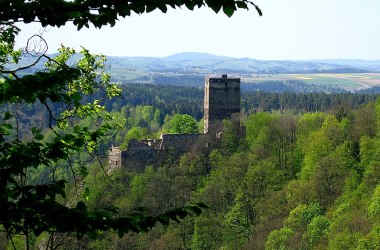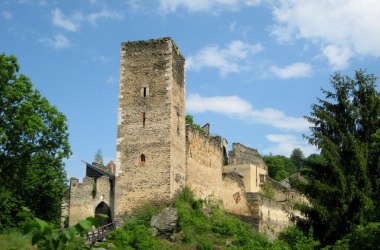Ruins and Fortresses in the Waldviertel
Centuries-old walls, mighty towers and dark dungeons.
The fortresses and ruins in the Waldviertel show knightly fortitude in the way they resist the ravages of time. They have managed to preserve the character of the regional landscape almost as it was 900 years ago: distinctive, genuine, and full of mysteries just waiting to be discovered. With a total of twelve fortresses and ruins in the Waldviertel, you can make those discoveries in nearly any type of weather. By the way the fortresses covered in this section are all designated in German as “Burg”, which means fortress or fortified castle. There is a separate section covering castles designated in German as “Schloss” (Castles in the Waldviertel).
Try waving from the tower to people below as a damsel in distress or crossing over the drawbridge as a knight or squire to leave your everyday routine behind. Or maybe accompany a night watchman on his rounds through the spooky narrow lanes exploring vestiges of medieval times. The imposing and largely well-preserved castles beckon even the most blasé sophisticates to immerse themselves in a bygone era. You should be prepared for adventure on a visit to fortified castles like Heidenreichstein, Rappottenstein and Raabs for instance. In Heidenreichstein, you cross two drawbridges into the Middle Ages, into a whole other world, in what is probably Lower Austria’s most beautiful water castle. The castle museum boasts treasures from the Gothic, Renaissance and Baroque eras. In Raabs an der Thaya, the imposing castle rises up at the confluence of the Moravian Thaya with the Austrian Thaya. It is one of the most significant fortifications for the history of settlement in the Waldviertel and can be toured by appointment only. In Rappottenstein, a perfectly preserved fortress awaits you. Never taken by an enemy, it is now open to curious wannabe lords and ladies of the castle for regular tours. Hidden behind the massive walls is the invincible defense system consisting of five baileys and eight gates as well as stylish, three-story arcades evocative of the Italian Renaissance.




